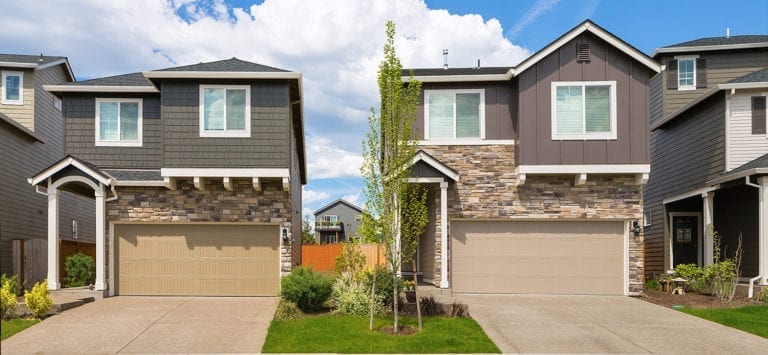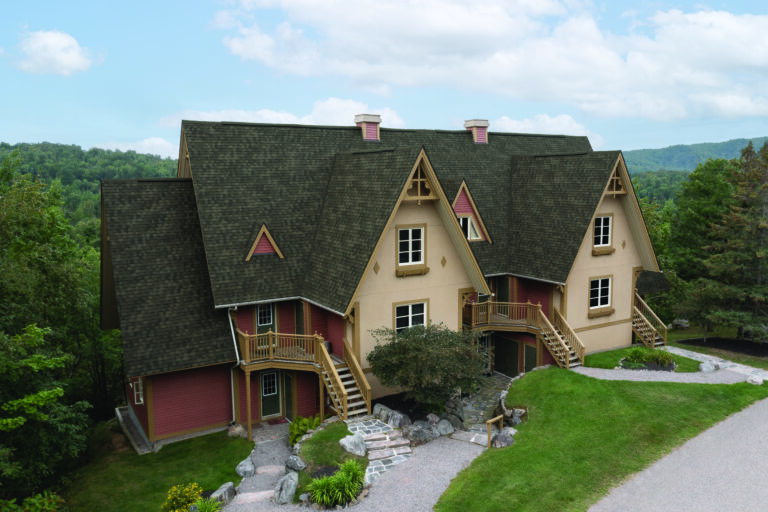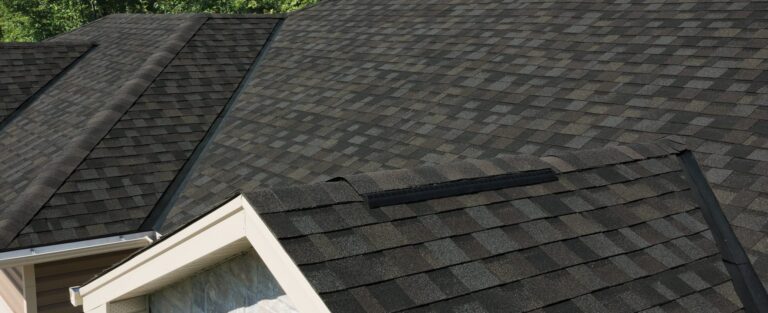Hip Roof vs. Gable Roof
What is the difference between a hip roof and a gable roof? You may want to know as you consider what type of roof you should put on your home extension, gazebo or detached garage. Or, perhaps you’re starting your home search and want to know which type of roof is better for your area.
What is a gable roof?
A gable roof is a roof with a flat-faced end shaped like an “A.” This triangular end is called a gable.
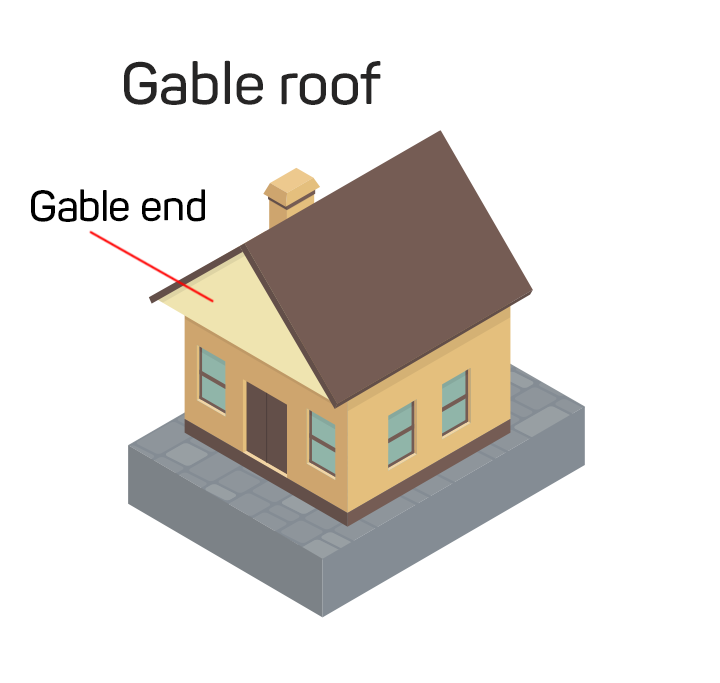
- What is a hip roof?
A hip roof has four sloping sides, without a flat face.
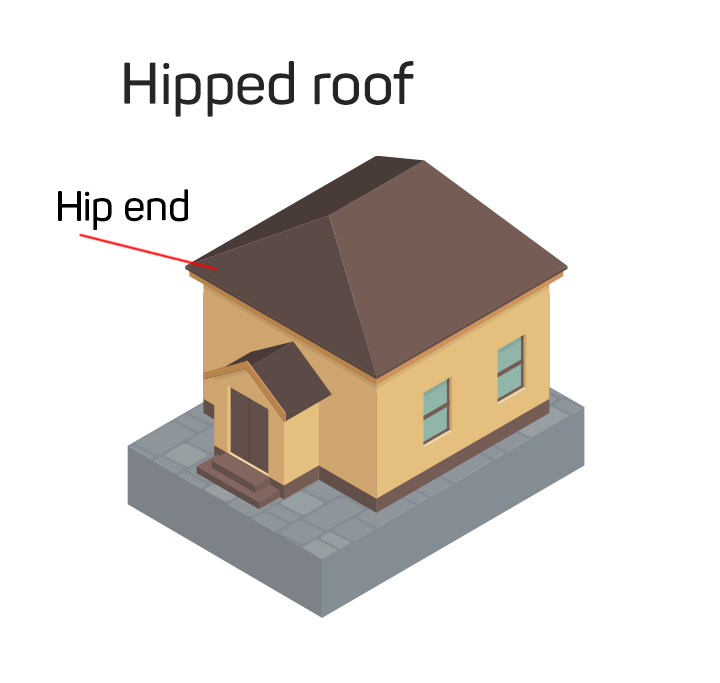
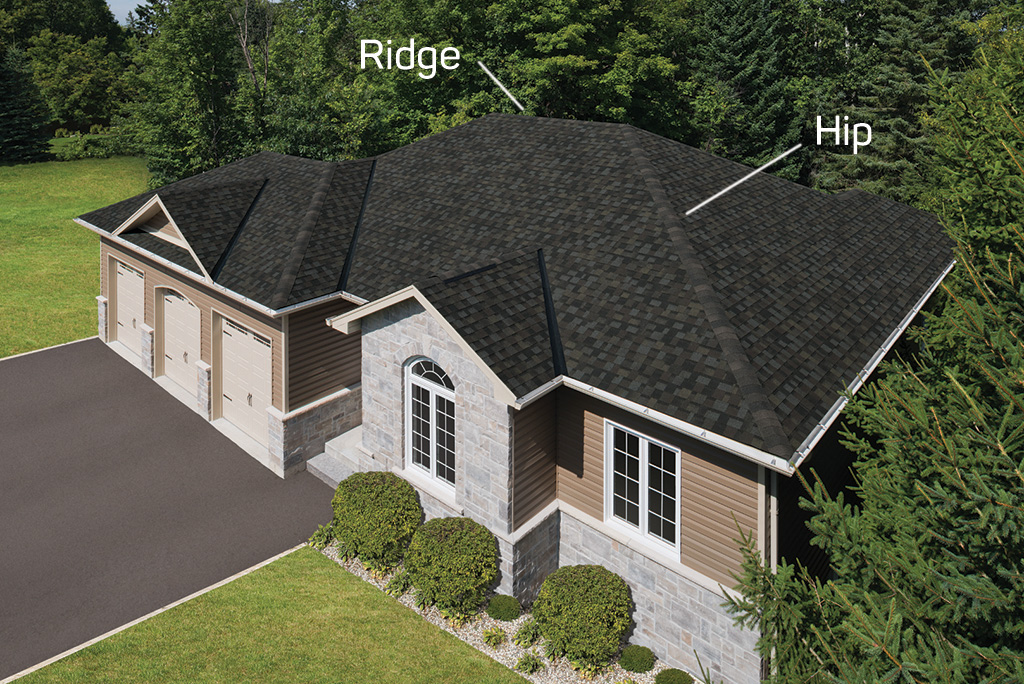
Both hip roofs and gable roofs can be incorporated into modern and historical architectural styles. Each also has unique benefits. Which you should choose is a complicated question. Much depends on:
- The climate conditions you face.
- The kind of space you want in your attic.
- Whether your roof deals with high wind conditions.
We’ll explain what these roofs look like, their benefits and disadvantages, as well as other details that can help you make your decision.
What is a Hip Roof?
A hip roof is a roof where all four sides of the roof slope downwards from the peak. It does not have a gable or a flat end. Hip roofs are popular on church steeples, where they typically have a high pitch. They’re also popular on houses in the suburbs, because they are easy to build. The walls beneath the roof are all the same height, which makes for simple construction.
The hip of a roof is the point where two roof planes meet and project outward. See the image below, which features a hip roof with prominent hips.
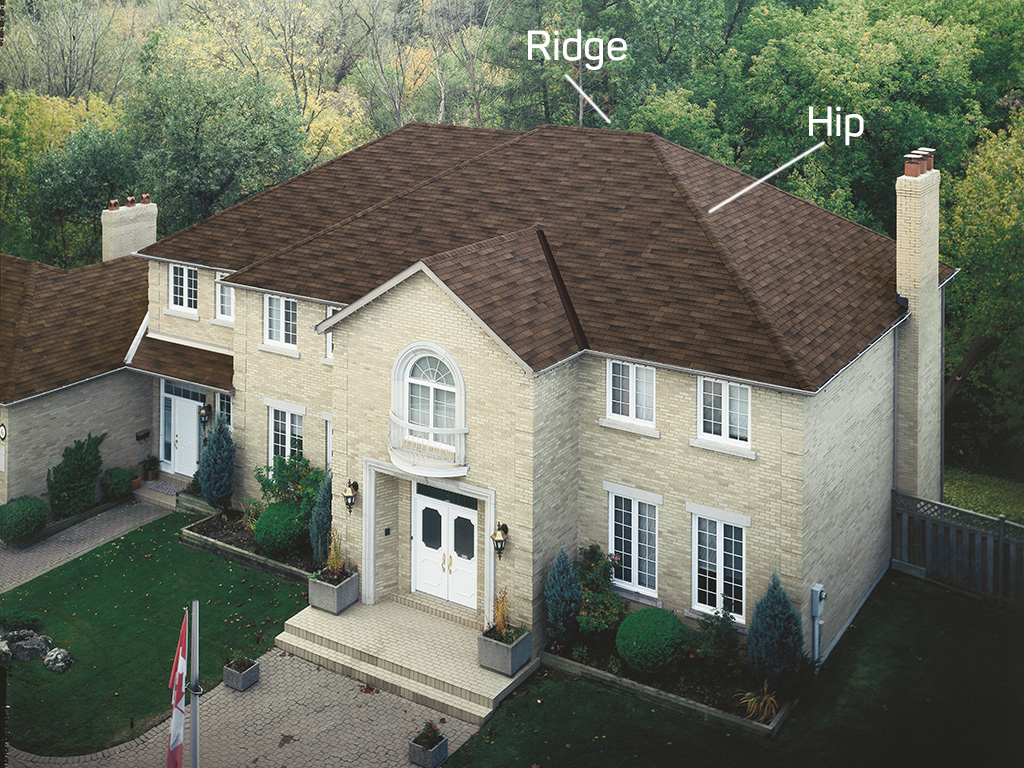
Types of Hip Roofs
There are several types or styles of hip roofs:
- Pyramid hip: The simplest hip roof is a pyramid hip or square hip roof. This roof looks like a pyramid, making a single peak at the top. Basic hip roofs will instead have a ridge (as shown on the hip roof above). When a pyramid roof sits on top of a gazebo or other garden structure it is called a pavilion roof.
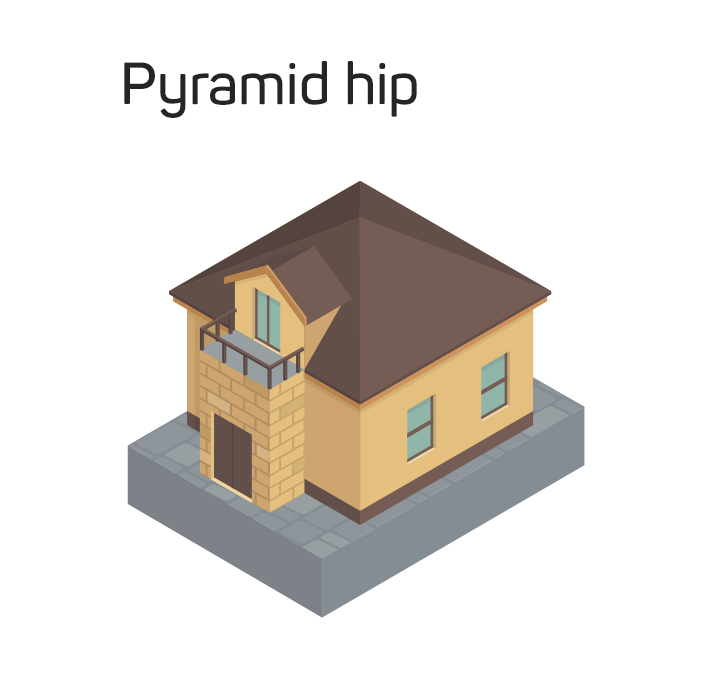
- Mansard roof: For this roof style, each side of the roof has two slopes. The bottom slope is steeper than the top slope.
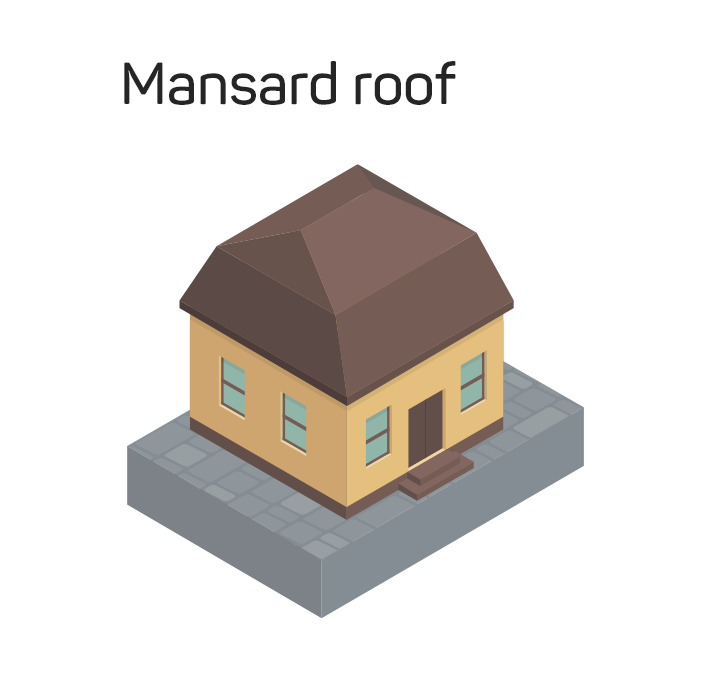
- Combination: A combination roof is the opposite of the mansard. It flares out at the bottom all of the way around the roof. The lower level of the roof is at a much lower pitch.
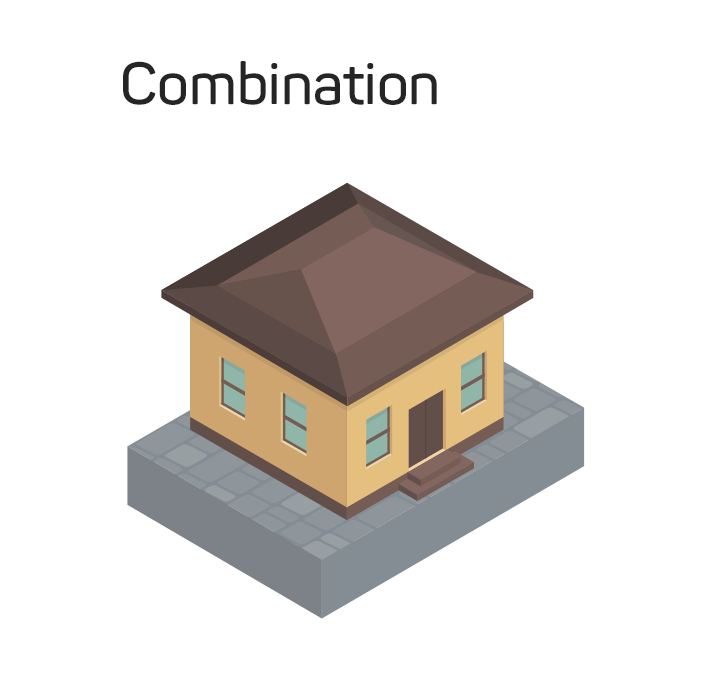
- Hip and valley: This variant of a hip roof includes valleys. Valleys are spots where two roof planes meet and project downwards. Hip and valley roofs have been popular in recent years.
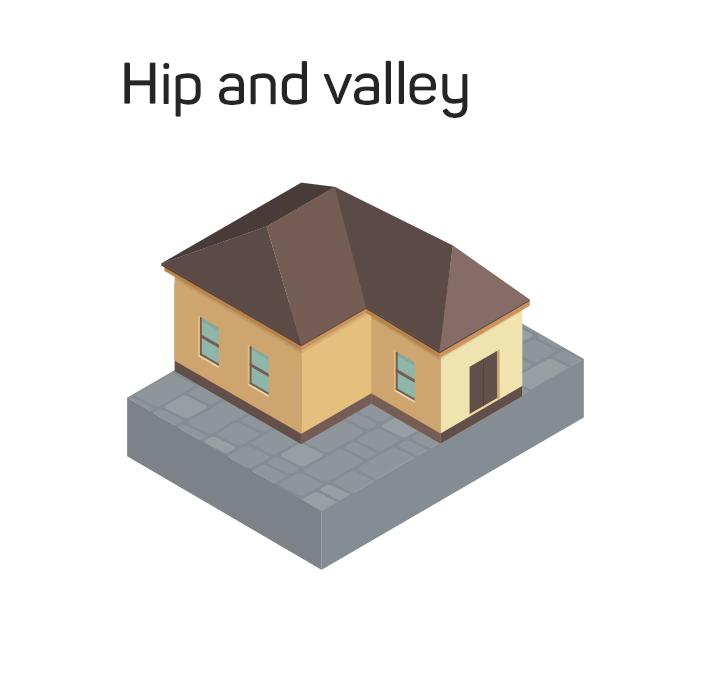
What is a Gable Roof?
A gable roof has at least one flat end called a “gable.” This triangular end is not composed of roof materials. Instead it is made of siding, stone or whatever materials are used on the rest of the home’s exterior. A gable roof can have one, two or more gables.
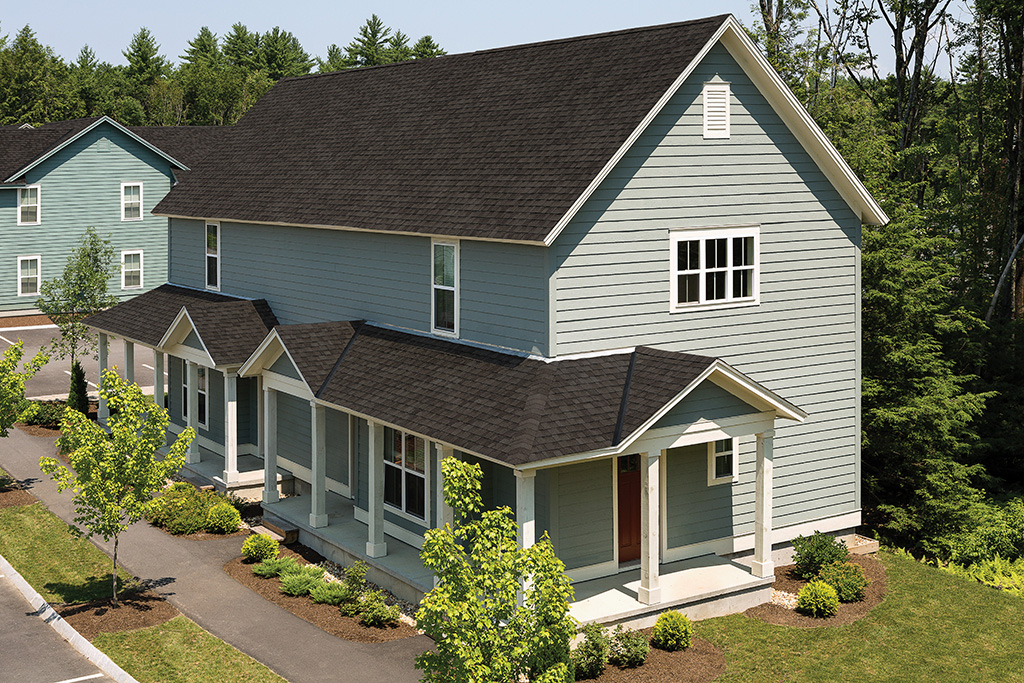
Gable roofs are most common in cold climates. They are the traditional roof style of New England and the east coast of Canada. Fans of literature in both countries will recognize the roof style from popular novels. Nathaniel Hawthorne’s “The House of Seven Gables” and Lucy Maud Montgomery’s “Anne of Green Gables” both reference this roof style in their titles.
Types of Gable Roofs
There are several types of gable roofs:
- Open gable: The classic gable roof, where the gable is made of the home’s siding material.
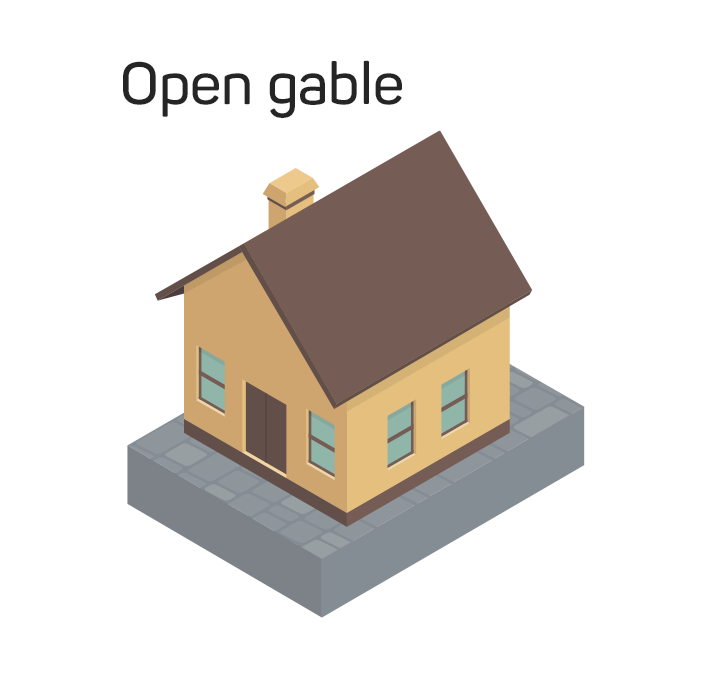
- Box gable: This roof’s gable is enclosed and extended.
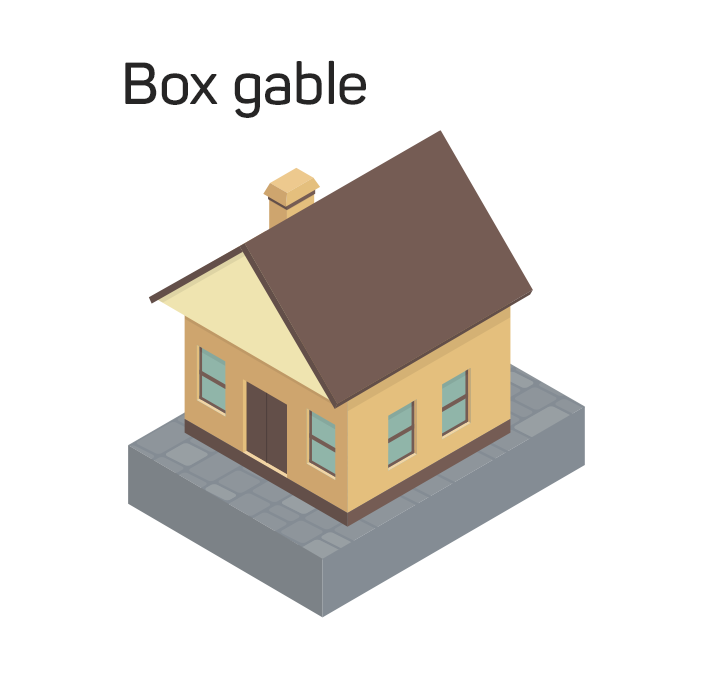
- Cross Gable: If you combine two gable sections, at a right angle from one another, you’ll have a cross gable roof.
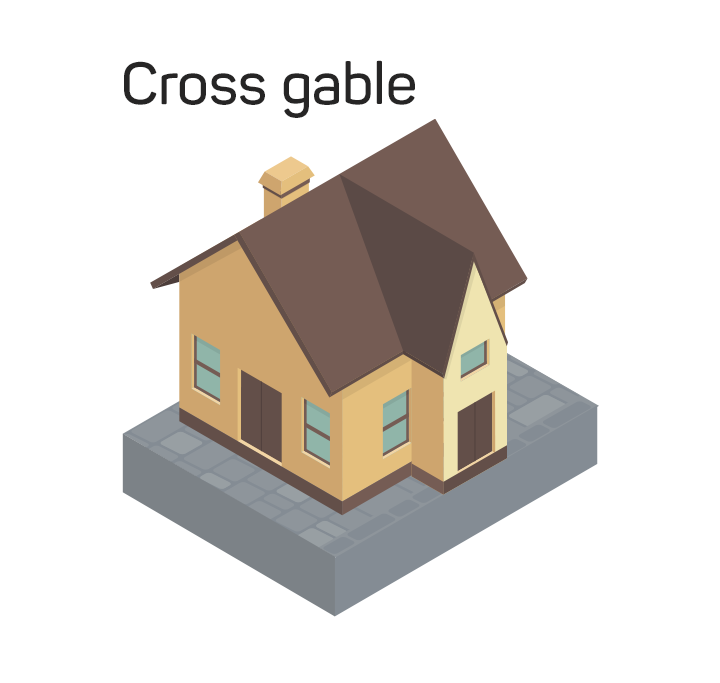
- Gambrel: A gambrel is the gable version of a mansard roof. The sides of the roof have two different slopes. Instead of a triangle, the gable will be a more complex shape. This roof type is common on barns.
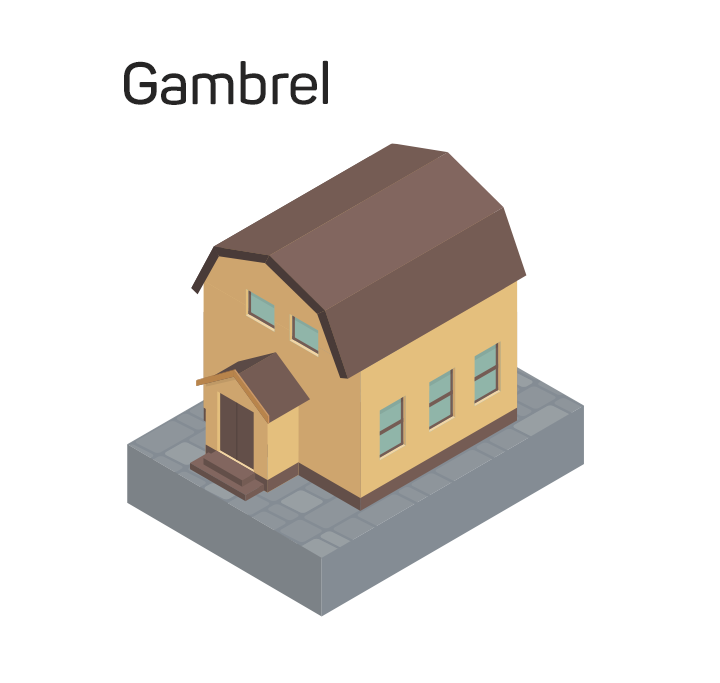
- Saltbox: This is a quintessential colonial-style roof. It features an open gable roof, where one end of the roof extends further than the other. The result is an asymmetrical roof and a home with much more space than one with a similarly sized open gable roof.
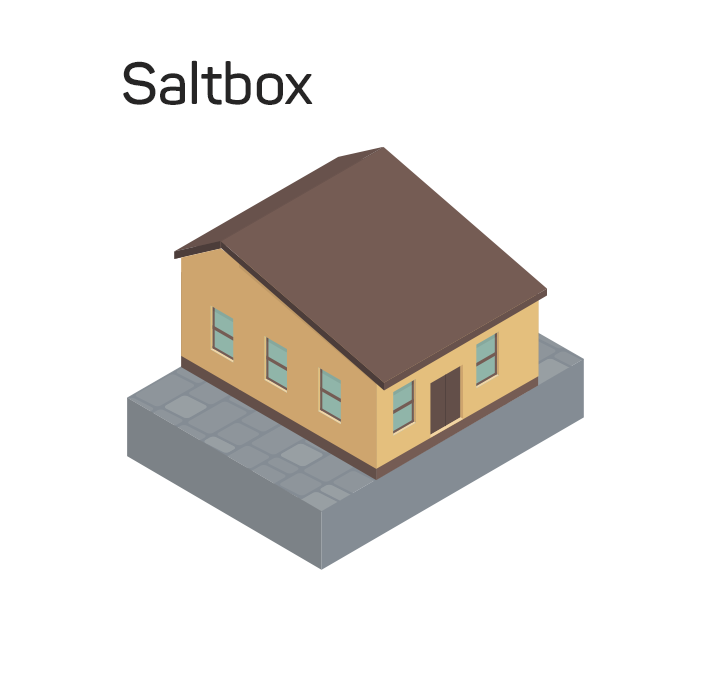
Can a Roof Have Hips and Gables?
Yes, many roof styles include both hips and gables.
- Intersecting: This roof type is also called an overlaid hip, as it looks like a hip roof was taken and laid over a gable roof, at a 90-degree angle.
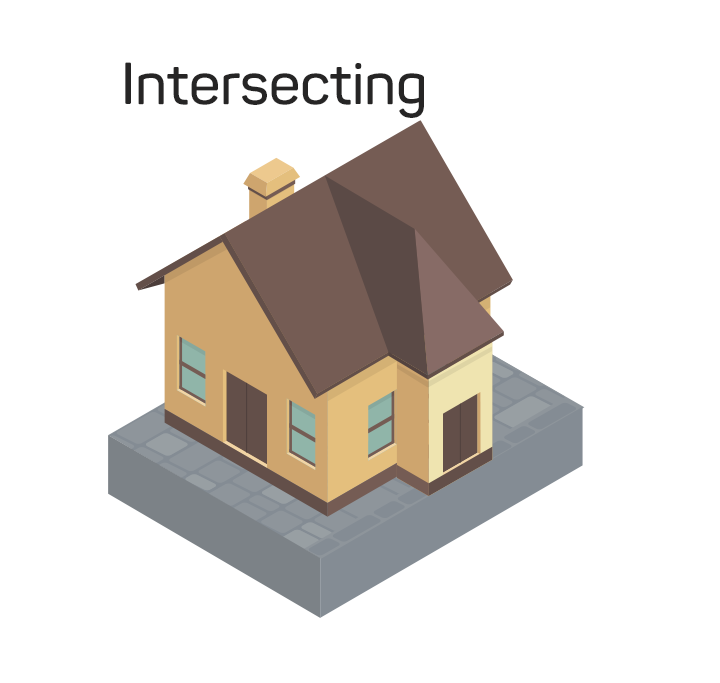
- Jerkinhead: Imagine an open gable roof, with a small covering at the very top of the gable. That’s a jerkinhead roof. The small covering is angled outwards and creates two small hips.
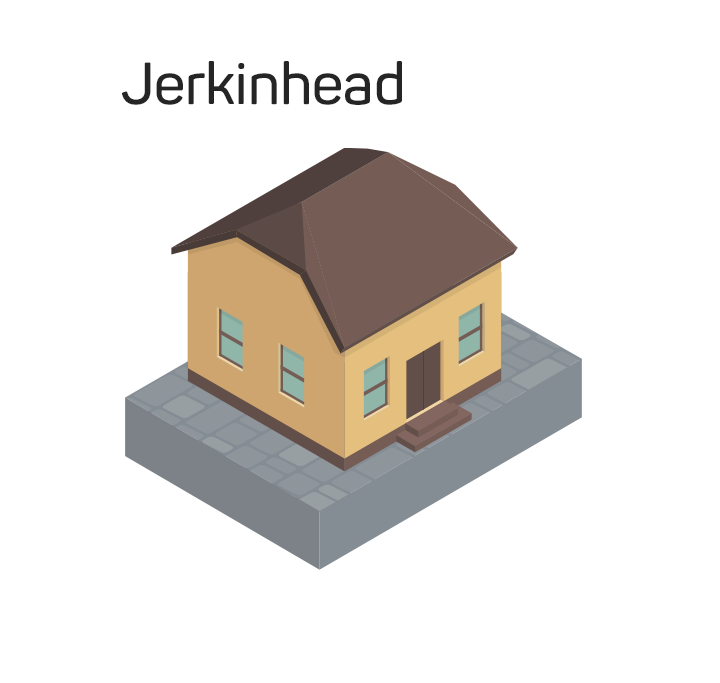
- Dutch gable: A Dutch gable is the opposite of a jerkinhead. It looks like an open gable roof at the very top but flares out into hips for the rest of the roof.
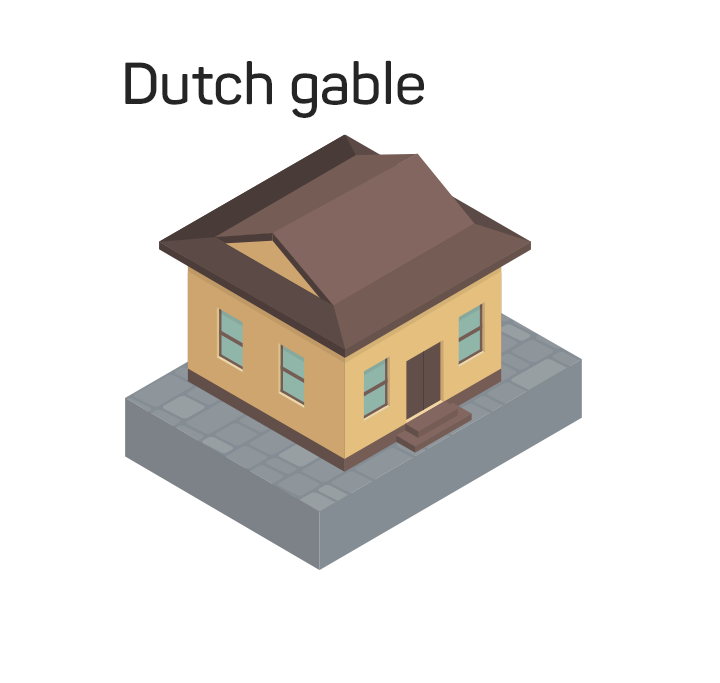
These roofs styles may combine the advantages and disadvantages of both hip and gable roofs.
Hip Roof vs Gable Roof Chart
This chart shows you the major differences between hip roofs and gable roofs at a glance. Afterwards, we explore each of these advantages and disadvantages in detail.
| Hips Roofs | Gable Roofs |
|---|---|
| Better Wind Performance | Worse Wind Performance |
| Worse Snow Performance | Better Snow Performance |
| More Expensive | Less Expensive |
| Easy to Build | Harder to Build |
| Less Attic Space | More Attic Space |
| May Have Insurance Benefits | Better Ventilation |
| No Decor Opportunity | Extra Decor Opportunity |
Hip Roof Advantages
High Wind Performance
Hips roofs are a solid choice for high winds. Research has confirmed that hip roofs deal with even extreme winds better than gable roofs. When tested in a wind tunnel, roofs with four hips and a square footprint performed best. They require less diagonal bracing than gable roofs and don’t have a flat face where wind can catch. As a result, hip roofs may be a better choice for you if your home faces high wind conditions.
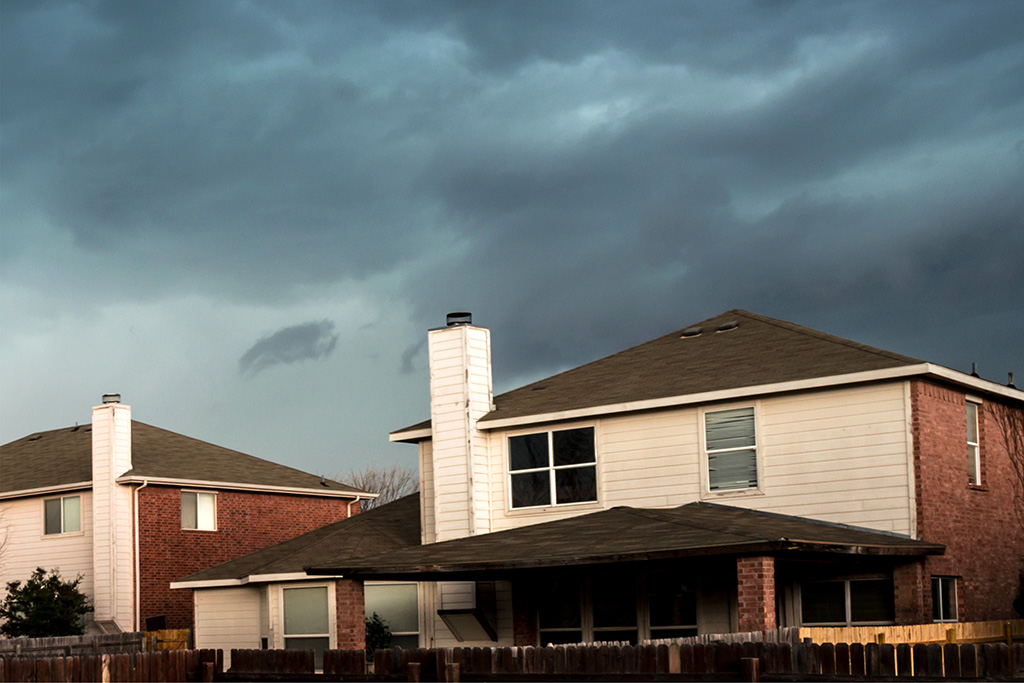
Hip Roof vs. Gable Roof for Insurance
As hipped roofs have much better wind performance, some insurance companies give homeowners who live in areas that experience hurricanes a discount on their insurance for having a hip roof. The discount could be as much as 32%.
Usually, you can expect this discount in areas that experience hurricanes and high winds, such as Florida. It’s wise to confirm this discount with your insurance provider before you choose a hip roof. If your home is already built, you can have a wind mitigation report completed to assess whether your home qualifies for the discount.
Easy to Build
From a builder’s perspective, hip roofs are easier to construct. All walls are the same height and there’s no need to put on the additional bracing a gable roof requires. Although, some builders will still prefer gable roofs even though they are more challenging to build, as they are also less expensive.
Hip Roof Disadvantages
Snow Performance
As they usually have a lower pitch than gable roofs, hip roofs may not be as good at shedding snow. All roofs need to be built to code, but it may be more challenging to design a hip roof to your building code’s snow load standards.
This cold weather performance may explain why gable roofs are more popular than hip roofs in snowy areas. That being said, architects can design hip roofs that have proper winter performance. Plus, you should protect your hip roof with ice and water protector to limit the effect of snowy weather.
Attic Space
Hip roofs also have less attic space than gable roofs because they require diagonal bracing that takes up space. In contrast, a gable provides a vaulted ceiling and additional space. However, you can include dormers on hip roofs to provide extra space and natural light to make up for the lack of a gable.
Expense
You may also wonder if a hip roof is more expensive than a gable roof. In fact, hip roofs are more costly. Not only is a hip roof challenging to design, but it also requires more roofing materials than a gable roof. So, you can expect a slightly increased cost if you choose a hip roof.
Gable Roof Advantages
Less Expensive
The primary advantage of gable roofs and one reason they are so popular is that they are less expensive than hip roofs. An open gable roof will only have two roof planes, instead of four for hip roofs, so you will likely spend much less money on roofing material. You do have to buy more of your siding material. However, it is usually less expensive than roofing.
Ventilation
Ventilating your attic is key to keeping your home and roof in good condition. Proper vents will allow excess moisture to escape. A gable roof can be outfitted with gable vents, which can help you reduce humidity and keep your home healthy.
Are Gable Vents Effective?
Opinions are split on the effectiveness of gable vents. A gable vent can be very helpful in garages, where you may need extra ventilation for health and safety. However, most homes will need more than a gable vent in order to properly vent excess moisture.
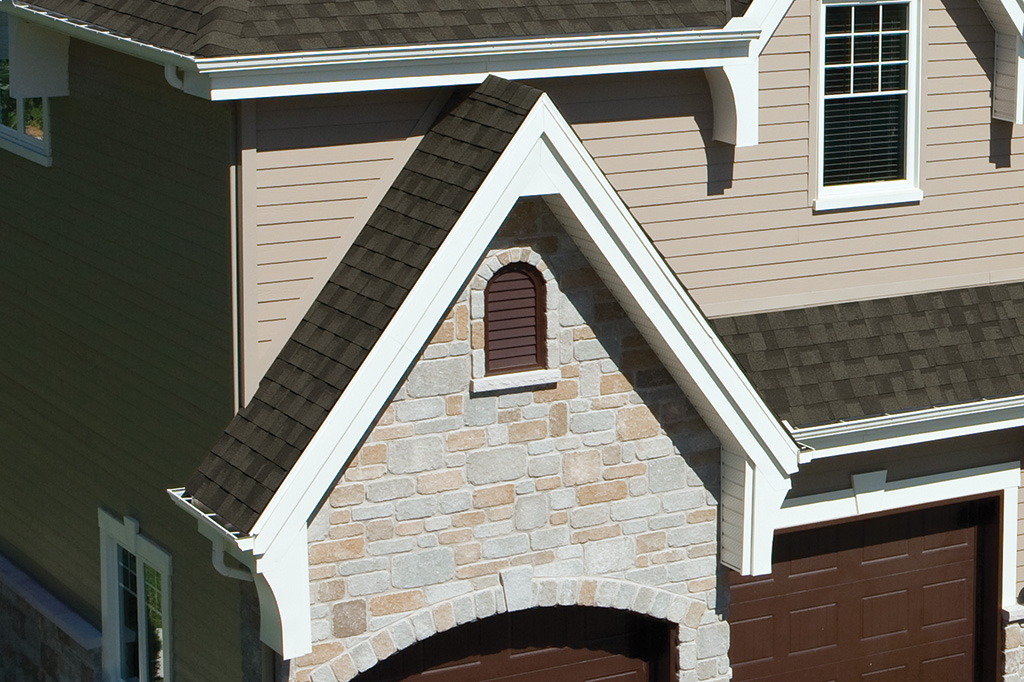
While choosing a gable roof for ventilation benefits may be smart in some circumstances, it’s not necessary. Ridge and soffit vents can provide adequate ventilation for any type of roof, so long as they are installed properly by an experienced professional.
More Attic Space
Gable roofs provide a larger space for your attic. Some people want to put spare bedrooms or kid’s play areas in the attic. After all, otherwise it’s just wasted space.
Decoration
While both hip roofs and gable roofs can be used to create beautiful architectural styles, gable roofs have more room for decor. You can install gable brackets, pediments and other ornaments to enhance your roof’s good looks. Gable decor is available in a range of materials and styles, from simple and modern, to intricate and old-fashioned.
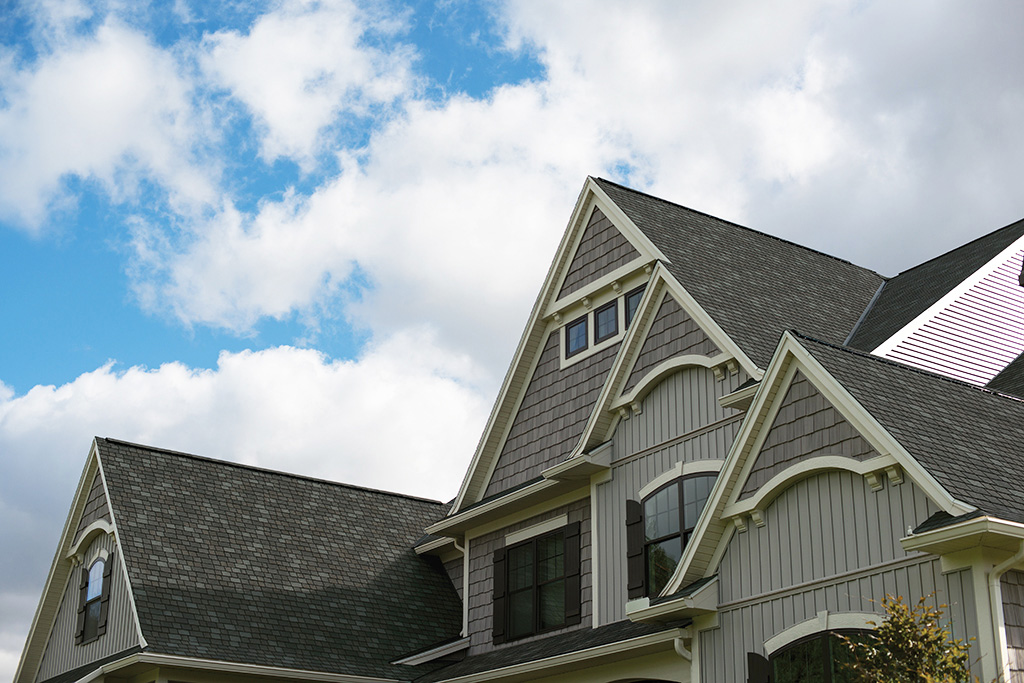
Gable Roof Disadvantages
Worse Wind Performance
Gable roofs do not perform as well as hip roofs during extreme wind. The gable is a flat surface that wind may hit directly. The wind is then pushed up the face of the gable to the roof. If there is an overhang on your gable, the force of the wind could, in extreme cases, pull up the truss of your roof.
Most professionals recommend keeping a roof overhang under 30 inches in areas where wind performance is a concern. However, refer to your architect. He/she will have a better idea of how to build for your specific conditions and building codes.
Harder to Build
Homebuilders find that homes with gable roofs are harder to construct. The walls must be different heights to account for the roof shape. Plus, a gable roof may need additional brackets in order to boost its wind resistance, which takes time and skill to install.
The Reverse Gable Garage
Still deciding between a gable roof and a hip roof for your garage? Consider the popular reverse gable garage.
It is simply a gable garage but turned to the side, so that the garage doors are on the side of the building that doesn’t have a gable. See the picture below for reference.
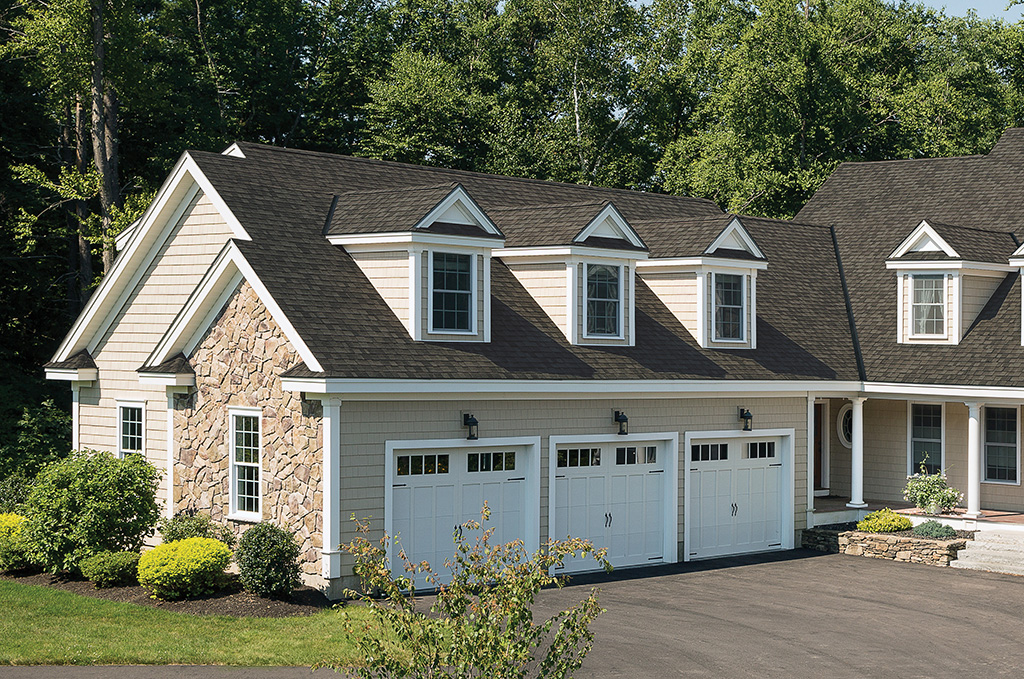
You’ll notice that this garage is much wider than it is long. This gives you enough room for a garage door (or two), without having to build a massive garage. Plus, as this is a gable garage, there’s more room overhead for storage than there would be in a hip roof garage.
While you may read that you don’t need gutters for a reverse gable garage, this isn’t true. You’ll get much more use out of your garage and it’s shingles by installing and maintaining the gutters. Thankfully, the extra width on a reverse gable garage also means that the downspouts are further away from the driveway than they would be otherwise. Thus, homeowners have more room to direct the downspouts away from the driveway.
The type of roof you put on your garage isn’t the only important decision you’ll make. It’s also key to choose the right shingles for your garage.
The Final Word on Comparing Hip Roofs vs. Gable Roofs
It may be a challenge to choose the right roof for your garage, home, or even your gazebo. Should you put climate conditions, beauty, or cost first? It’s wise to work with an architect or a builder who can help you balance your needs. He/she can create a unique roof design for you that combines hips and gables, or help you choose a traditional roof type that works best for you.
Once you’ve selected the right roof type, it’s important to install the right shingles on it, for both performance and style. Your next step is to learn about the types of shingles and decide which fits your new roof best.

